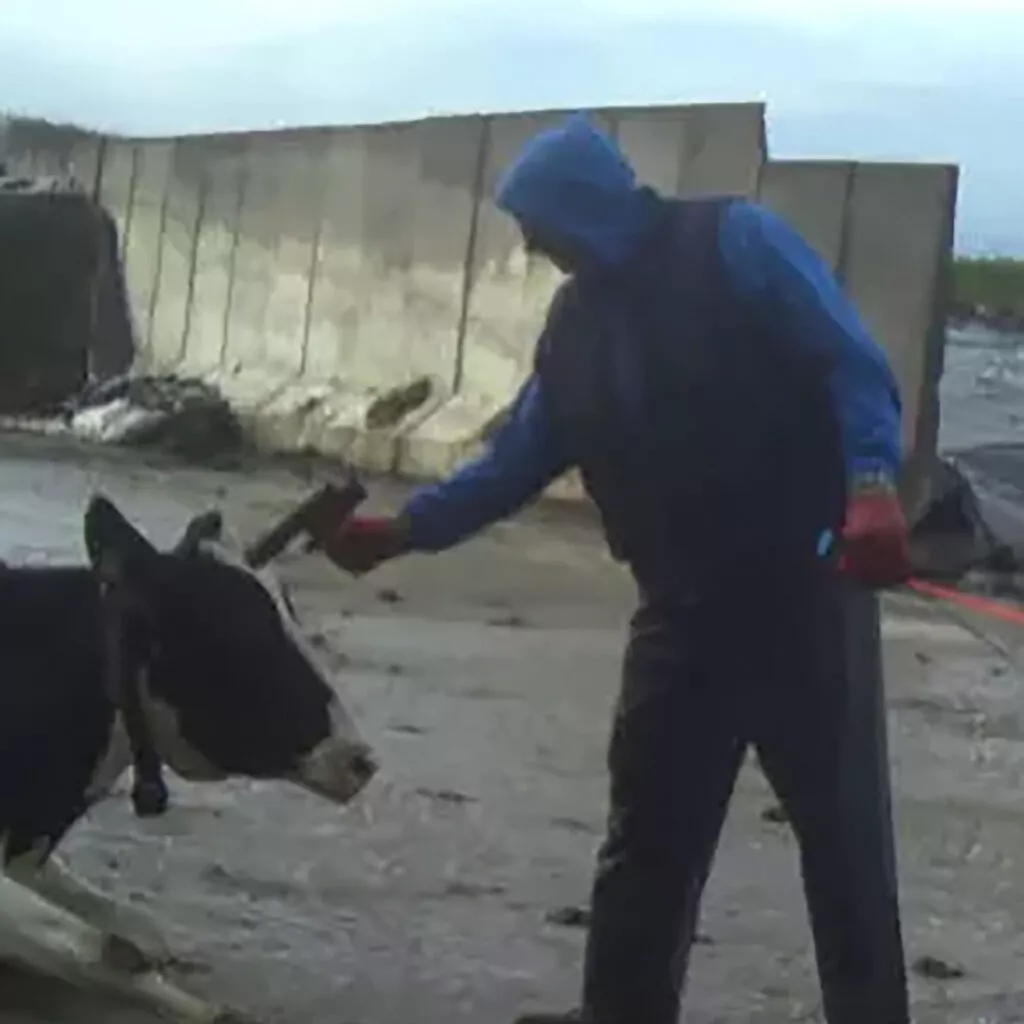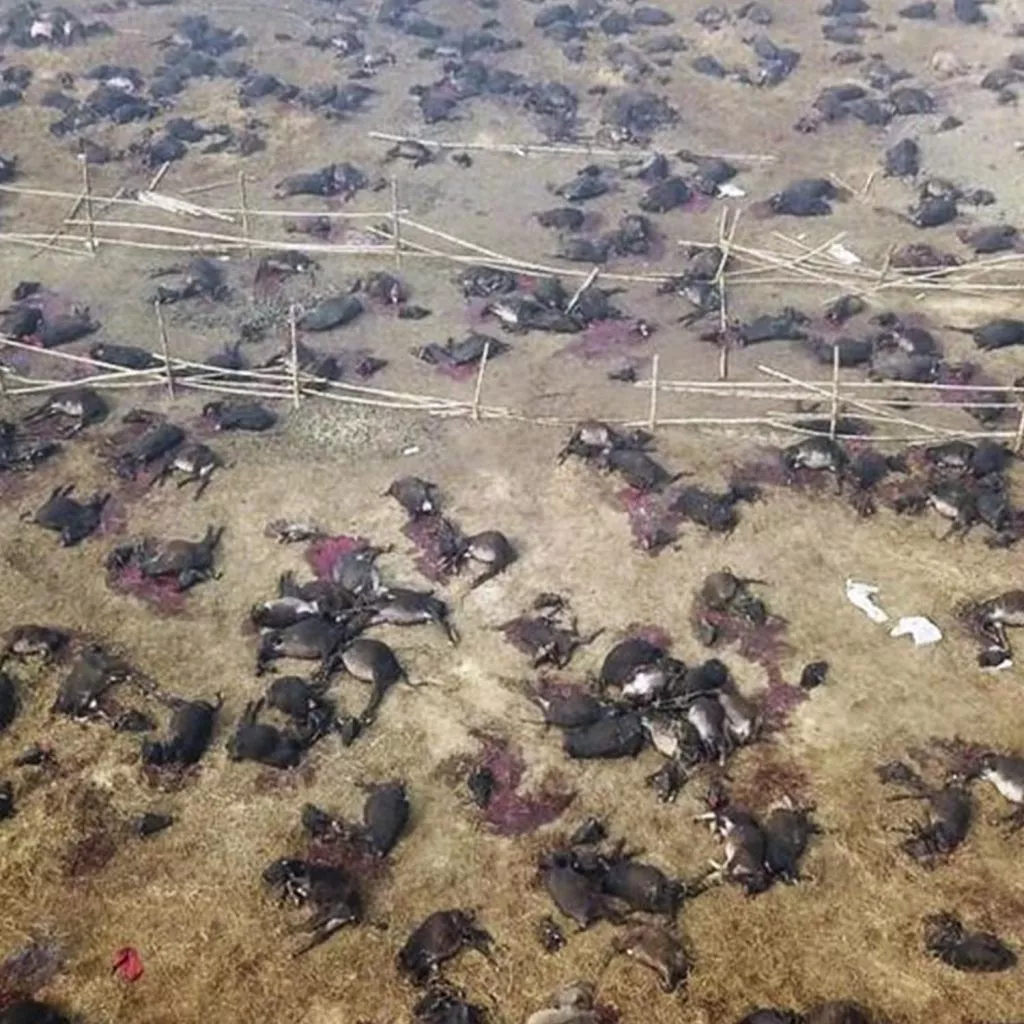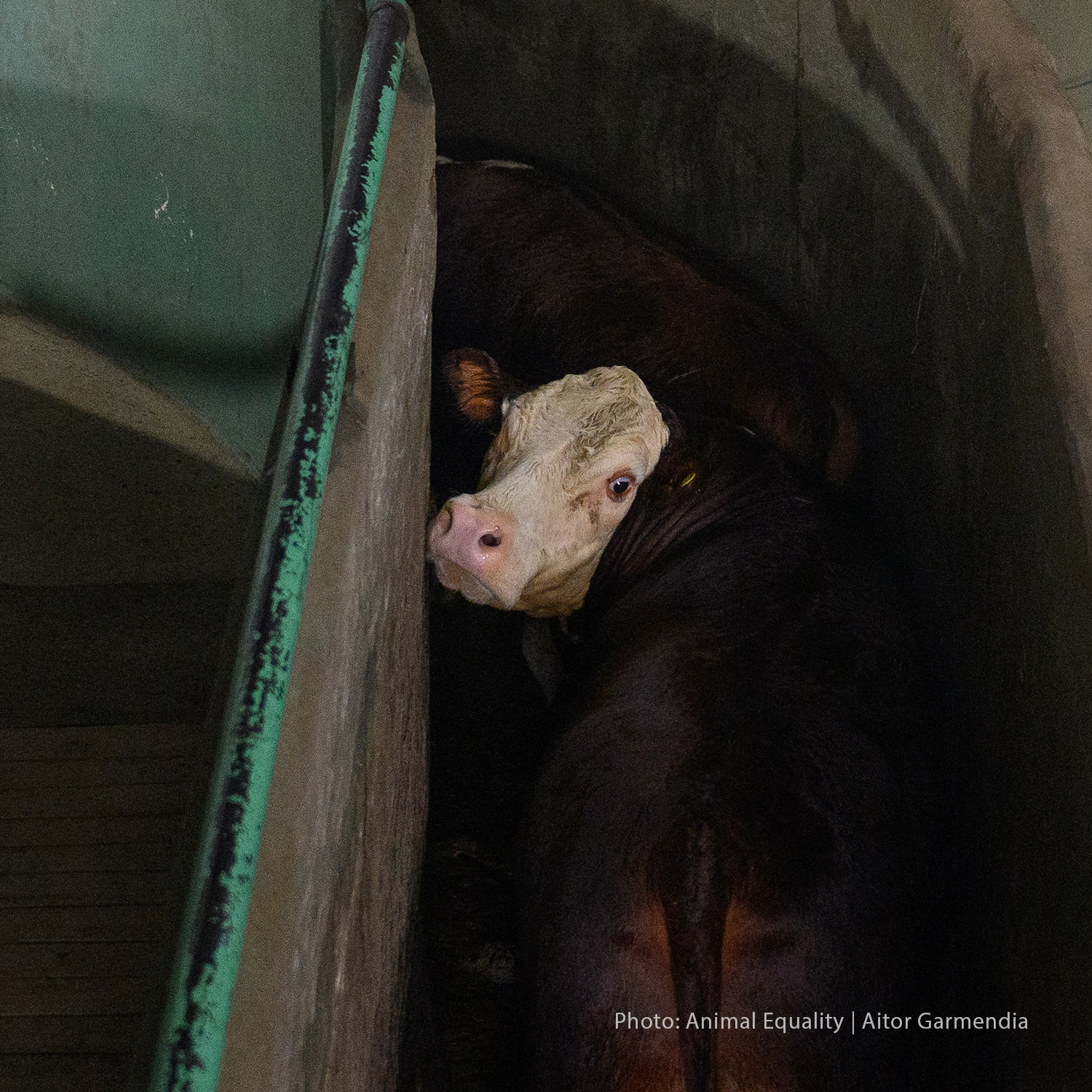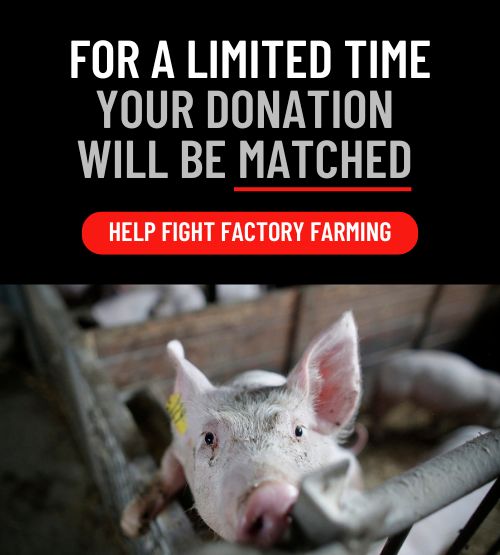
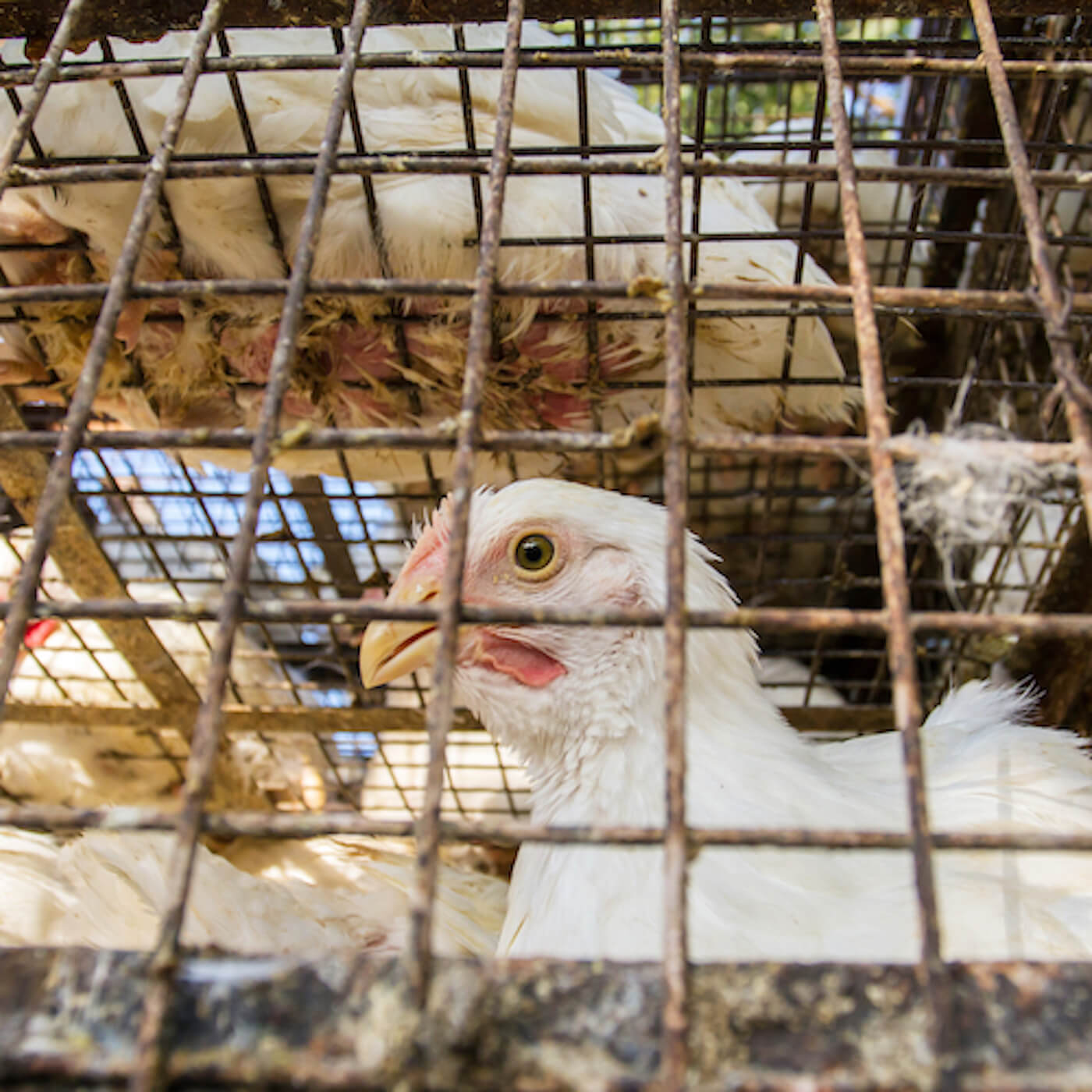
A Chicken’s Last Day Revealed by Undercover Investigator
You’re sitting on the dirty, ammonia-laden ground with tens of thousands of others around you. A door creaks open. A man walks in and you rush to move from his path, but your body is weak and your legs are useless. You suddenly feel a hand forcefully grab you and you can see several others facing the same mistreatment. If you have survived this long – many don’t – you are now suffering from respiratory problems due to your abnormal breeding and the disgusting conditions in which you have been forced to live. A fresh breeze passes over you and you then realize that this is the first time you have been outside since arriving weeks earlier. Little do you know, this is the beginning of the end.
A TERRIFYING JOURNEY: This is the first phase of the trip to the slaughterhouse for chickens used for meat. As if life hasn’t be torture enough, the end is far worse. Once slung into transport crates with several other birds, the chickens are packed onto trucks with no food or water. Due to the rough handling by workers, many chickens suffer broken wings and other injuries. Now the chickens face a trip that can last up to 12 hours long with no protection from extreme weather. In just one incident last year, more than 34,000 chickens froze to death while being held in a truck overnight outside a slaughterhouse.
HANDLED WITHOUT CARE: If the chickens survive this difficult journey, they are snatched from the crates and thrown upside down where their legs are forced into shackles, often having their bones broken in the process.
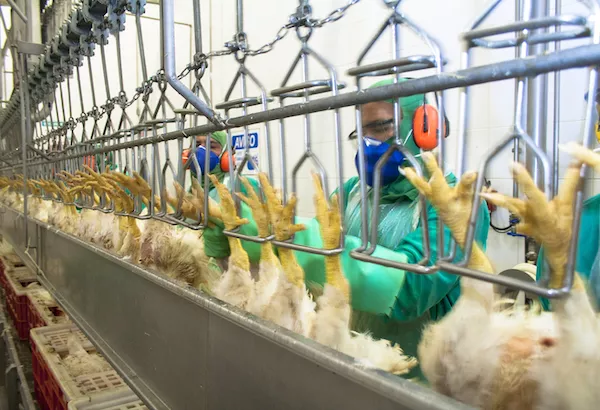
An undercover investigator working for Compassion Over Killing in the U.S. recalled his first 30 minutes on a kill floor:
Speed seemed to be the dominating objective, since our workday ended once a quota was achieved, so workers grabbed the chickens as quickly—and thereby as roughly—as possible from the conveyor belt, often picking them up by one wing, one leg, or their necks. They often forced the chickens so hard into the shackles I was amazed the birds’ legs weren’t ripped off. Although birds are supposed to be hung upside-down by both of their legs in the metal shackles, sometimes chickens dangled by just one leg.
Nearly every chicken responded with screams and violent physical reactions from the moment they were grabbed by workers and as they went through the line. The screaming of the birds and the frenzied flapping of their wings were so loud that you had to yell to the worker next to you, who was standing less than two feet away, just so he could hear you.
STILL CONSCIOUS: Once in the shackles, the upside-down birds are dragged through an electrified water bath meant to paralyze them, but not all are rendered unconscious.
Gail A. Eisnitz explains in her book, Slaughterhouse: “Other industrialized nations require that chickens be rendered unconscious or killed prior to bleeding and scalding, so they won’t have to go through those processes conscious. Here in the United States, however, poultry plants—exempt from the Humane Slaughter Act and still clinging to the industry myth that a dead animal won’t bleed properly—keep the stunning current down to about one-tenth that needed to render a chicken unconscious.” This means that chickens may still be completely conscious when their throats are cut.
FINAL MOMENTS: Once they pass the automatic blade that cuts their throat, blood slowly drains from the dying birds. But because the birds are fighting for their lives, or because they have been improperly shackled, many birds miss the blade. Then the “backup killer” is responsible for slicing their throats, but some birds are still missed. According to USDA records, each year millions of chickens are still alive and conscious when they are thrown into scalding-hot water tanks meant to remove their feathers.
WHAT WE’RE DOING: Animal Equality is working around the world to change this horrific fate for chickens. Not only are we educating the public through on the ground efforts and investigations about what occurs inside slaughterhouses, but we are also working with companies to improve their current animal welfare standards.
WHAT YOU CAN DO: Become an Animal Protector today and take easy, online actions that will improve the lives of millions of animals.
Recommended
